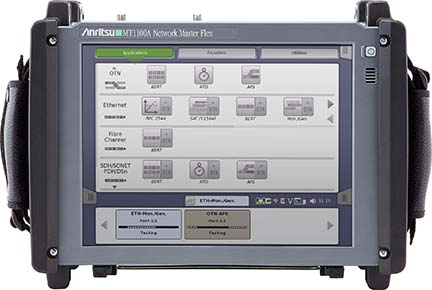Migration to SDN Requires Flexible Testing Solutions for the Data Plane
Proponents of SDN point to five key benefits:
- Programmable: Control of the network can be programmed directly because it is decoupled from forwarding functions;
- Responsive: Administrators can dynamically adjust network-wide traffic flow to meet changing needs;
- Centrally managed: Software-based SDN controllers centralize network intelligence to create a universal network appearance to applications and policy engines;
- Dynamic Configuration: Network managers can configure, manage, secure, and optimize network resources very quickly via dynamic, automated SDN programs, because the programs are open standards-based they can write themselves; and
- Vendor agnostic: When implemented through open standards, network design and operation are simplified because instructions are provided by SDN controllers rather than multiple, vendor-specific devices and protocols.
Network Testing
Many believe incorporating test software controlled by SDN into the network is another benefit and the best approach to maintain network performance. While this may be the most logical solution in a few years when standards and SDN technology have fully evolved, independent transport testers not integrated into SDN remain the best approach for today. The reason test software integrated into the SDN is not currently optimal is that there is no reference when tests are conducted. For example, most networks utilize switches from multiple manufacturers. With SDN controlling the tests there is no way to determine which results correlate to each switch. Another factor is that the incestuous nature of having the network element become the network tester by installing virtualized test solutions creates additional points of failure. In this case, both the network element and optical modules raise questions when test results between inter-operable devices yield inconclusive results.
A separate test instrument, such as the one shown in Figure 3, solves this problem because it has its own “golden” reference, so determining the results for each network element is easier and any issues can be located faster. For example, duplicating the same test environment and parameters from one network element can be achieved on different manufacturers’ devices, regardless of control plane and management environment. In the event that one manufacturer’s device yields opposing results, the independent test reference can capture, troubleshoot, and report the results that can be duplicated without removing the network element nor virtual test instance.

Figure 3 – Separate test instruments with a “golden” ratio more effectively test networks.
Instrument flexibility is also critical, allowing operators to save time and money. Test solutions need to support legacy and emerging transport technologies, as well as rates from DS1 to 100 Gbps, so they can conduct measurements anywhere in the network, including inside the metro, access, and core.
Virtualized tools for monitoring network performance, reliability and dynamic traffic management which communicate through the control plane are significant reasons to migrate to SDN architecture. However, the need for independent testing and troubleshooting from reference is required in the data plane.



















